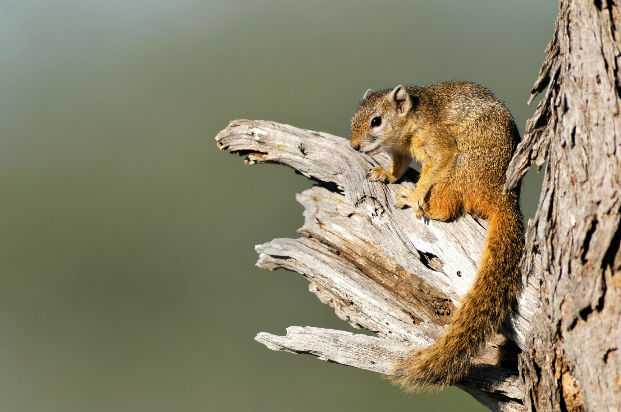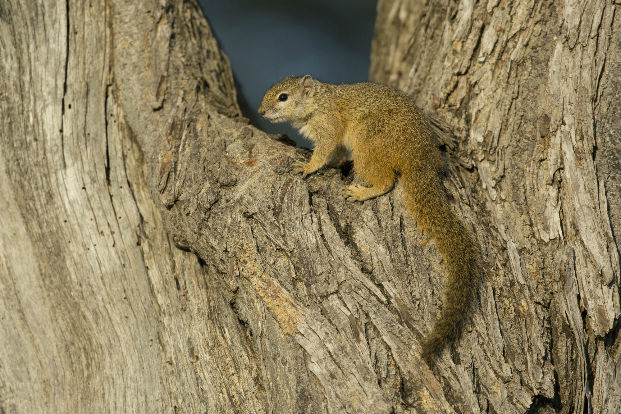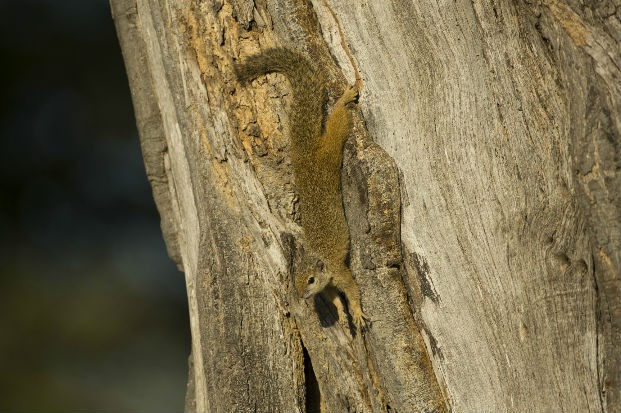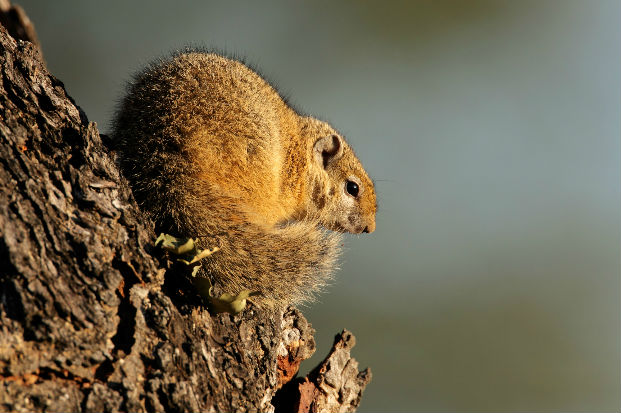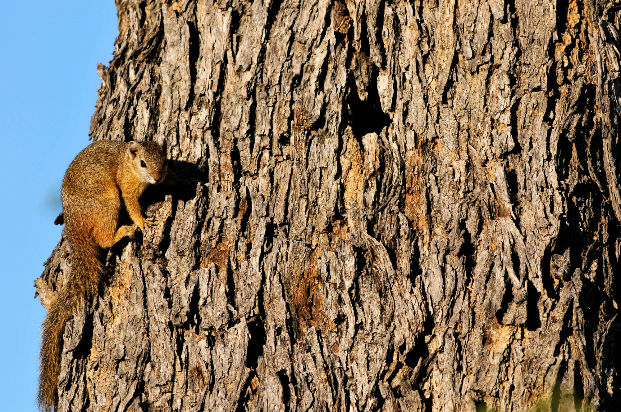The tree squirrel, which lives in savanna woodland, is also known as the mopane squirrel due to its fondness for nesting in the natural cavities of mopane trees. It is half the size of the grey squirrel found in Europe which can weigh as much as 600 g. The tree squirrel’s diet includes the expected wide variety of plant material including berries, seeds, bark, flowers and fruit. It also include insects and nestling birds.
Vote for the fact you find most fascinating
Tree Squirrels have a territory of half a hectare. This are is defended by the male but marked by the whole group through urination as well as mouth wiping and anal dragging.
To escape danger a tree squirrel will edge around a tree trunk to put it between itself and the threat.
Sciuridae is the name used in science to describe the squirrel family. This is derived from the Latin word skiouros which means shady tail. This refers to the fact that some species of squirrel will shelter under their own tail.
Tree squirrels will recognise one another through a common smell which they share. This odour is transferred through mutual grooming, sleeping together and from anal marking one another.
Tree Squirrels regularly move their young from nest to nest to stop the build-up of parasites. To do so they employ a “sack-of-potatoes” technique holding the baby’s back leg in their mouth whilst it clings onto their shoulders.
The female Tree Squirrel will advertise that she is in oestrous through high-pitched chatters, a more excited version of the alarm call. This call is thought to bring nearby females into heat simultaneously.


